Growing up, Woody the Woodpecker was one of my favorite cartoon characters. What fascinated me was the fact that he was like a drill machine and was able to chop down trees! Well to my surprise, Woody was based on a bird that is quite common in my hometown of Florida, i.e. woodpeckers.
Today I shall list for you some of the most commonly found woodpecker species here in Florida and how you can spot them easily! So let’s begin!
Commonly Found Woodpeckers in Florida
Here are some commonly found species of woodpeckers in Florida:
1. Red-bellied Woodpecker
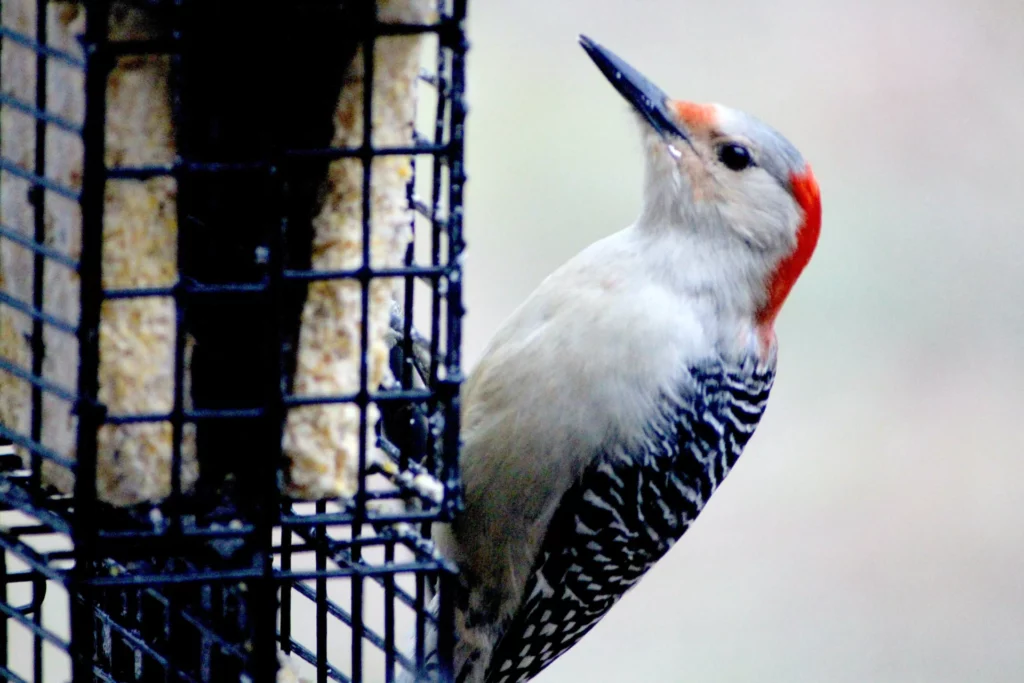
Their scientific name is Melanerpes Carolinus. You can find these woodpeckers in forests, woodlands, and suburban areas all over the Eastern US. Interestingly, even though they are named “red” bellied, the red portion of their belly is usually covered by other feathers and is not easily visible.
Red-Bellied Woodpeckers are omnivorous, meaning they eat plant-based foods such as fruits, nuts, etc., as well as insects and small bugs.
You’d be surprised to know that Red-bellied woodpeckers are known for their distinctive call, which sounds like a “Churr” sound. They are also known for making drumming noises.
How to Identify a Red-bellied Woodpecker?
The Red-bellied woodpecker is named so because of their red underside or belly. But you cannot see this red coloration in females. Male Red-Bellied Woodpeckers have a red cap, a pale gray face, and black and white backs.
2. Downy Woodpecker
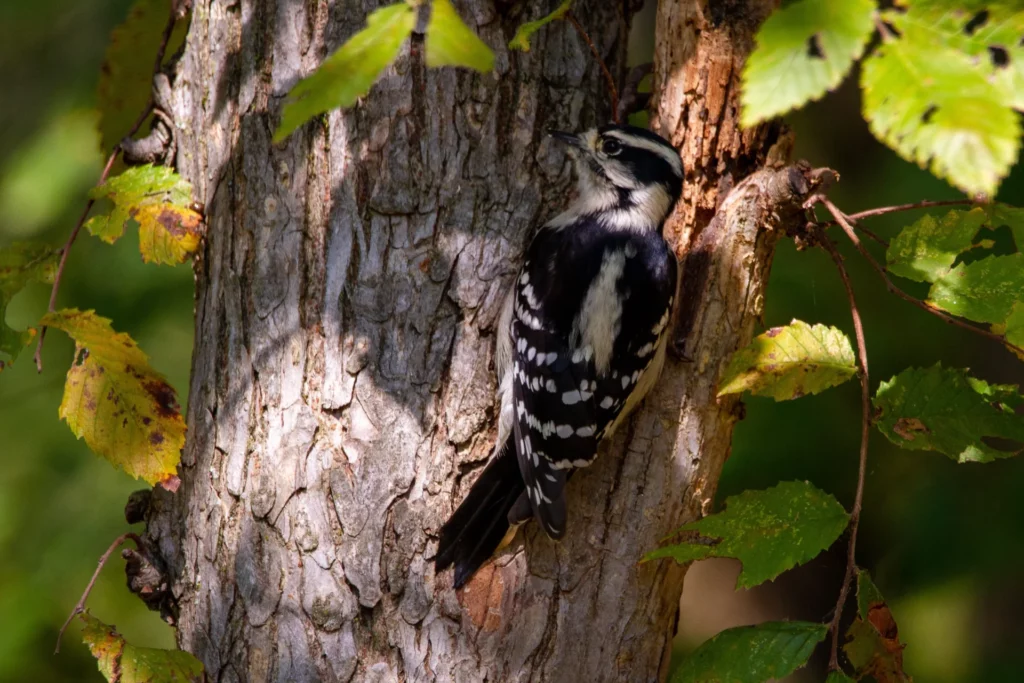
The scientific name for these woodpeckers is Dryobates Pubescens. You can find these birds all across NA in forests, woodlands, and even urban areas. They are very “thick-headed” literally because their skulls are thick and reinforced. This gives them the ability to peck and hammer on objects harder than other birds without causing them any physical damage.
Downy Woodpeckers are omnivorous. They eat fruits and seeds as well as insect larvae! Downy Woodpeckers are also fans of tree sap and nectar.
They are foragers. You can see them foraging around for nuts and seeds and trees. When they spot insects or larvae, they use their beaks to drill into the wood and extract the larvae and insects. These are the smallest species of Woodpeckers in NA. They are a very common species of Woodpecker and are very charming!
How To Identify a Downy Woodpecker?
Downy are the smallest species of woodpeckers. They have black and white feathers with stripes all over their bodies. Another way you can separate them is by looking for white spots on their wings.
3. Hairy Woodpecker
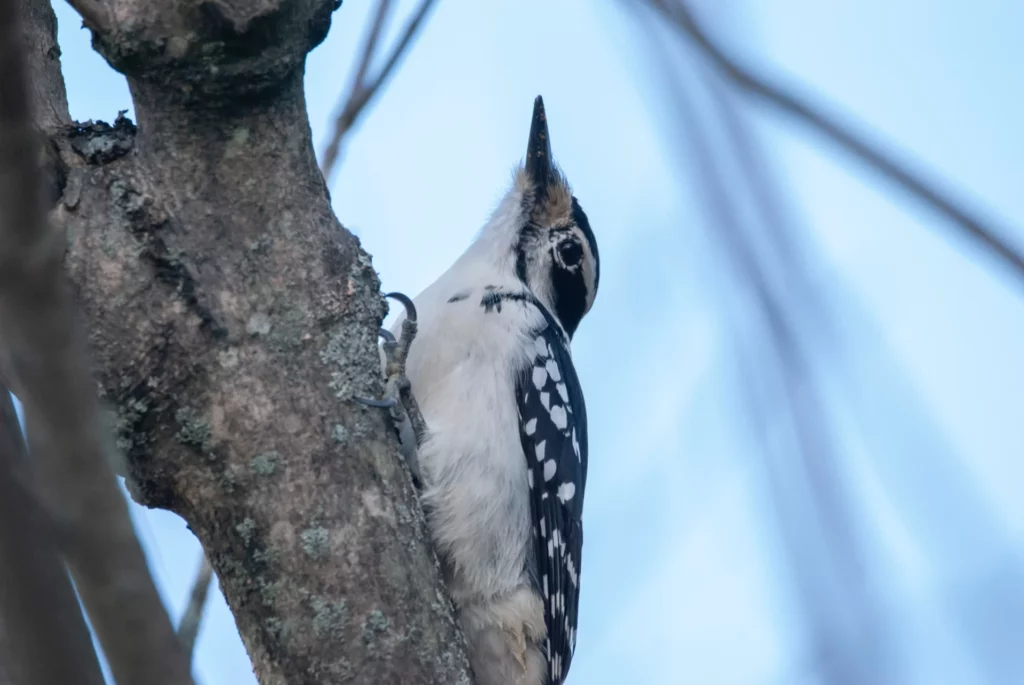
The scientific name of the Hairy Woodpecker is Picoides Villosus. They make homes in the towering trees of North American forests and in wooded suburban areas. These birds have a special talent for storing food like a hidden treasure in little crevices and under tree barks.
The Hairy Woodpeckers have quite an appetite for insects which makes them hunt for wood-boring beetles and caterpillars. But, interestingly, they don’t just stop here. These birds also love to munch on delicious nuts, berries, and seeds.
These woodpeckers are talented climbers with their busy beaks and strong wings, which they use to hop on trees. Oh, did I mention their remarkable drumming behavior? With lightning-fast pecks on the tree trunks, they can generate a unique rhythm to communicate with fellow woodpeckers and establish their territory.
How to Identify a Hairy Woodpecker?
They look deceptively similar to the Downy Woodpecker. That being said, they are a bit bigger in size. If you ever come across a woodpecker and want to make sure it’s a Hairy Woodpecker, just look closely at its bill and tail to see whether they are a bit longer compared to the Downy Woodpeckers.
4. Red-cockaded Woodpecker
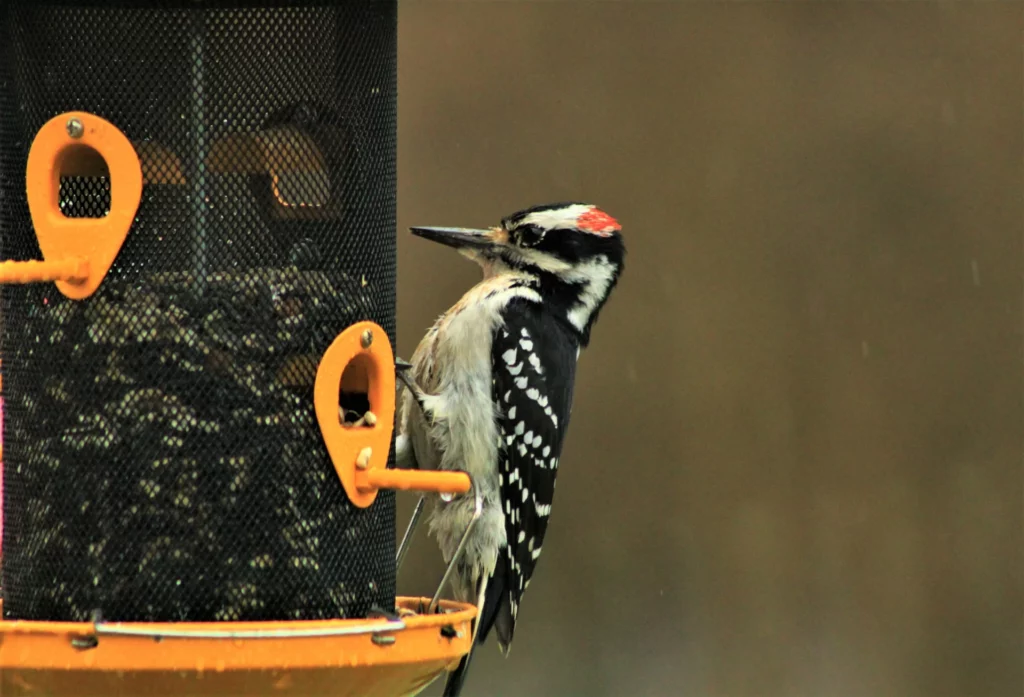
The Red-cockaded Woodpeckers are scientifically known as Picoides borealis. These birds like to build their cozy homes in the woods. However, they just don’t settle for any tres they stumble upon! Instead, they have a strong preference for longleaf pines. One of the interesting facts about them is they are the only birds in entire North America that craft their nests in living longleaf pine trees.
These birds mainly feast on insects! With gentle taps and pecks on the tree bark, they like to find and crunch wood-boring beetles, ants, and spiders.
These woodpeckers are known for their special breeding system. Instead of every bird having its own nest, a group of them worked together to maintain a single nesting cavity. They make “sap wells” on the trunks of pine trees from which they feed. Also, they are clever enough not to let go of the insects that come to investigate them. It’s their clever way of having a feast!
How to Identify a Red-cockaded Woodpecker?
Look for a woodpecker that’s neither too big nor small with a short bill and white stripe above the eye. They have a cool black cap on their heads and a white patch on their cheeks. Their backs are striped with black and white spots. If you spot a male Red-cockaded Woodpecker, you’ll notice a small red streak called “cockade” on the sides of his head.
5. Yellow-bellied Sapsucker
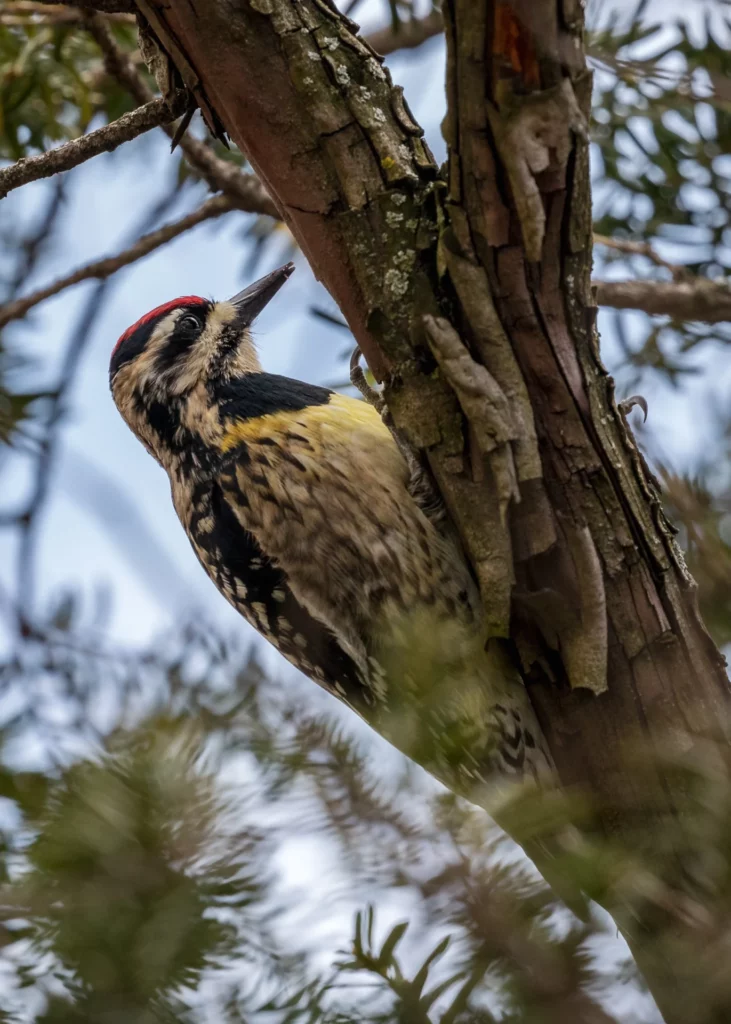
Scientifically the Yellow-bellied Sapsuckers are known as Sphyrapicus varius. In the summer, they make homes in the boreal and mixed forests. When winter arrives, they bid farewell to their northern home and move to warmer lands like the southeastern United States and Central America.
As their name suggests, they feed on the sap wells of trees. First, they drill small holes in the bark of trees. Sometimes other insects get trapped by the sap, and the Yellow-bellied Sapsucker also eats them!
Yellow-bellied Sapsuckers are skilled at creating and maintaining sap wells in tree trunks. What’s interesting is that they often come back to the same tree, creating distinctive patterns of rows and columns of sap wells.
How to Identify a Yellow-bellied Sapsucker?
If you are exploring their potential habitat, keep an eye out for the tree bark with distinctive rows of evenly spaced holes. These rows are the feeding sign of the Yellow-bellied Sapsuckers, indicating their presence. They have a black and white patterned back and a yellowish belly. In males, you’ll notice a vibrant red crown and throat adding to their masculine charm.
6. Northern Flicker
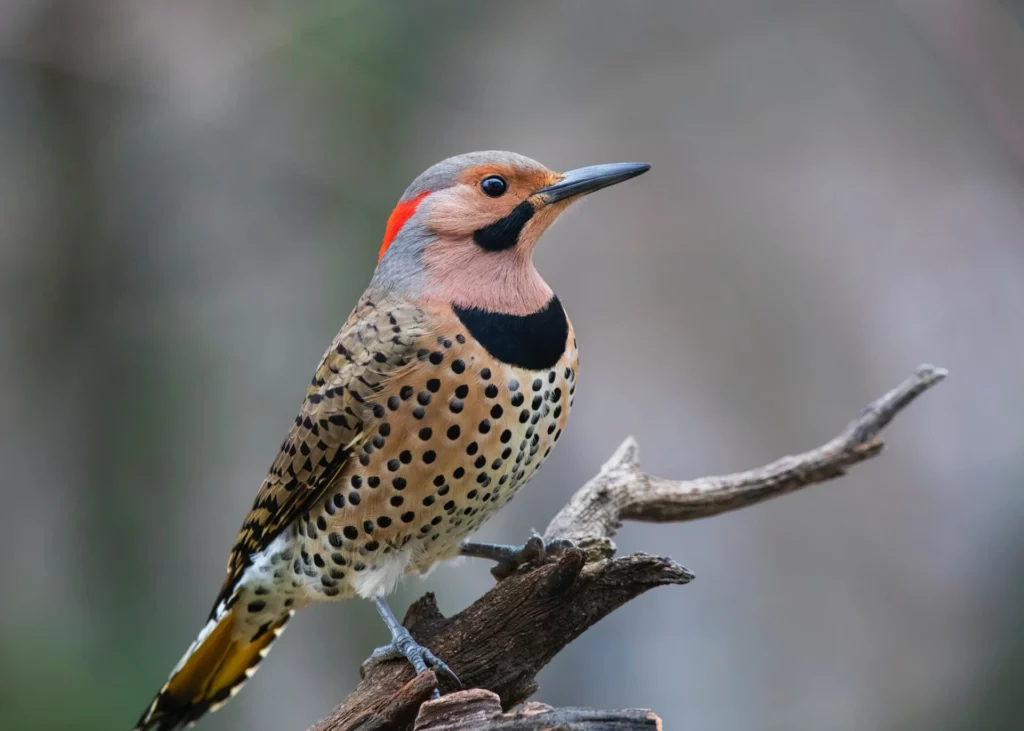
The scientific term for Northen Flickers are Colaptes auratus. These birds are quite the explorers. They are found in forests, woodlands, urban areas, and even open fields in North America. They are famous for their “flickering” flight pattern, which allows them to glide through the sky, resembling a magical butterfly. When these birds take flight, a white patch on the rumps appears, making quite a display.
The Northern Flickers have a diverse diet. They love to feast on ants, beetles, termites, and other insects they find in the ground or on trees. But that’s not the end. These birds also enjoy munching on tasty berries and seeds.
They are clever ground foragers, often spotted pecking and searching for food on the ground or even on tree trunks. When in the sky, they fly through a series of rapid wingbeats followed by short glides. As for appearance, they have a lovely brown body with eye-catching black bars on the back.
How to Identify a Northen Flicker?
Just search for the distinctive black crescent on the chest. It’s a secret marking that sets it apart from other species. The males have a charming red patch on the back of their heads.
7. Pileated Woodpecker
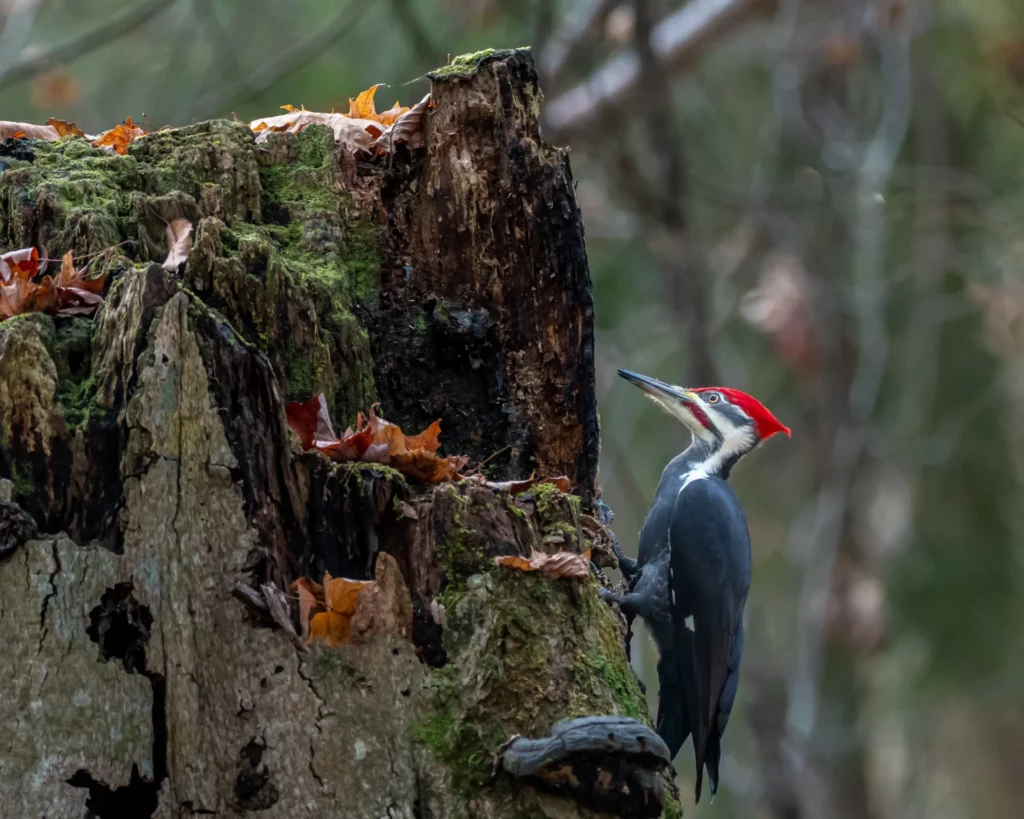
Dryocopus Pileatus is the scientific name of Pileated Woodpeckers. They can be found all over North American forests, where the tall trees create a grand canopy. These birds like to stay close to water sources, like streams, ponds, and lakes.
These woodpeckers love eating carpenter ants and wood-boring beetle larvae. They search for them in the bark of dead or decaying trees, like a nature detective on a quest. Like other species, these birds also enjoy nibbling on fruits.
Have you ever heard a loud, resonating drumming sound echoing through the forest? If yes, it was the Pileated Woodpecker that used its powerful bill to create a rhythmic beat on tree trunks. Besides, they are excellent climbers who can easily navigate the vertical tree trunks defying gravity. They have a sleek black body with a prominent red crest.
How to Identify a Pileated Woodpecker?
To identify the magnificent Pileated Woodpecker, look for its large size, striking red crest, and elegant white neck stripe. It is also the largest woodpecker species in North America, standing out with its regal presence.
8. Red-headed Woodpecker
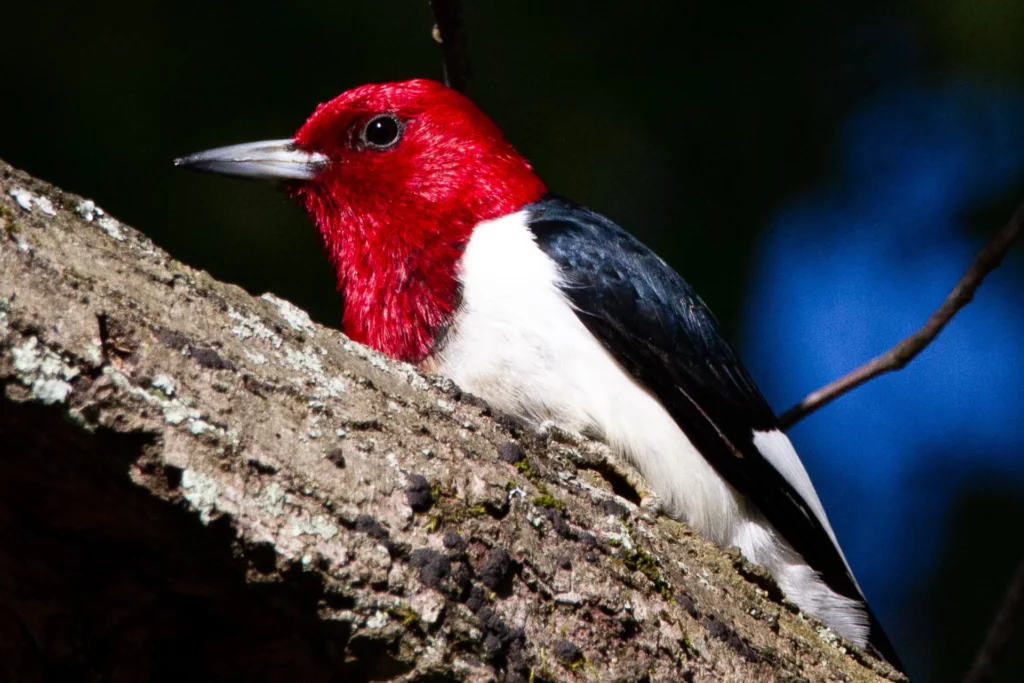
To Science enthusiasts, Red-headed Woodpeckers are known as Melanerpes erythrocephalus. They can be seen throughout the North American open woodlands and forest edges. Did you know, Red-headed Woodpeckers have a cool way of keeping an eye out for danger? This behavior is known as “hawk watching.” They like to perch on poles and on top of the trees, just like hawks do, and watch their surroundings carefully.
These clever birds have a diverse diet that includes tasty treats like insects, juicy fruits, crunchy nuts, and tiny seeds. But sometimes, when they felt adventurous, they would even snack on small lizards and tree frogs.
These woodpeckers can catch insects in the air while flying with fancy moves. They are also quite clever when it comes to storing food. They hide their foods by wedging them into tree cracks or burying them in the ground. As for their appearance, they have a bright red head, neck, and upper breast. These bold colors stand out against their black back, wings, and tail.
How to Identify a Red-headed Woodpecker?
When you’re trying to identify a Red-headed Woodpecker, check if the bird has black and white feathers and if the head and neck are of a solid bright red color. And if you look closely, you will notice a white belly and black and white wings.
9. Ivory-billed Woodpecker
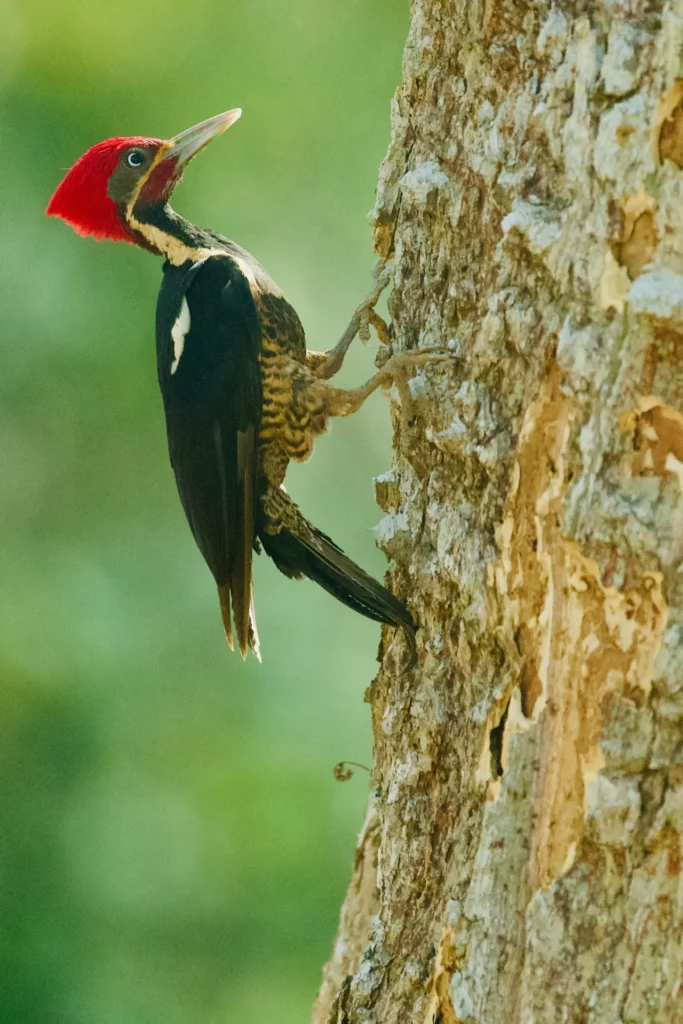
The scientific name of the Ivory-billed Woodpecker is Campephilus principalis. You can find these birds all throughout the vast forests of the South Eastern United States with tall trees and shimmering wetlands. They are known for their elusiveness and rarity. These woodpeckers are excellent at spotting dead and decaying trees and making nests in them.
Ivory-billed woodpeckers, like other woodpeckers, are omnivorous. They eat nuts, seeds, fruits, small insects, and even small reptiles!
These Woodpeckers are one the largest species of woodpeckers! Sadly the Ivory-billed Woodpeckers are an endangered species. This means that they are at the risk of being extinct completely. Their population worldwide is very small and decreasing.
How To Identify Ivory-Billed Woodpeckers?
You can easily identify Ivory-Billed Woodpeckers as they are one of the largest woodpecker species. They have black and white plumage. The males of this species have a white next stripe and a prominent crest.
10. Gold-fronted Woodpecker
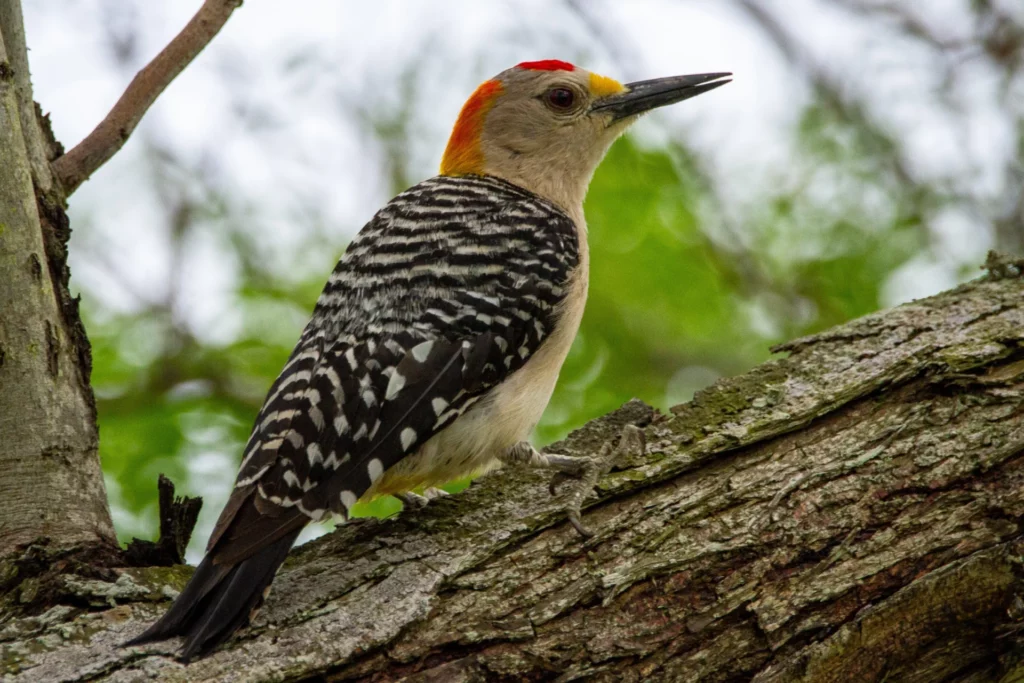
Lastly, the scientific name for Gold-fronted woodpeckers is Melanerpes Aurifrons. These birds can be found all over South America and Central America. They are native to forests, savannas, woodlands, and even urban areas of South and Central America.
Like other species of woodpeckers, they are omnivorous and eat both plant material and small insects and reptiles.
Surprisingly, this species of woodpeckers are exceptional and adept climbers. They are very vocal and create a unique high-pitched call. These birds have zygodactyl feet. This means that they have two toes facing forward and two facing backward. This allows them to have a strong grip.
How To Identify Gold-fronted Woodpeckers?
These woodpeckers are very vocal and have a distinct call. They have black and white plumage and a white rump. Their foreheads have a distinct golden color which gives them their name. The males of this species have a red crown patch, while the females have a black crown.
Conclusion
Now that you know more about the woodpeckers in Florida, I hope you can use this information and identify them when you run into them! Let us know if we missed any and also how many you have seen around your neighborhood!

